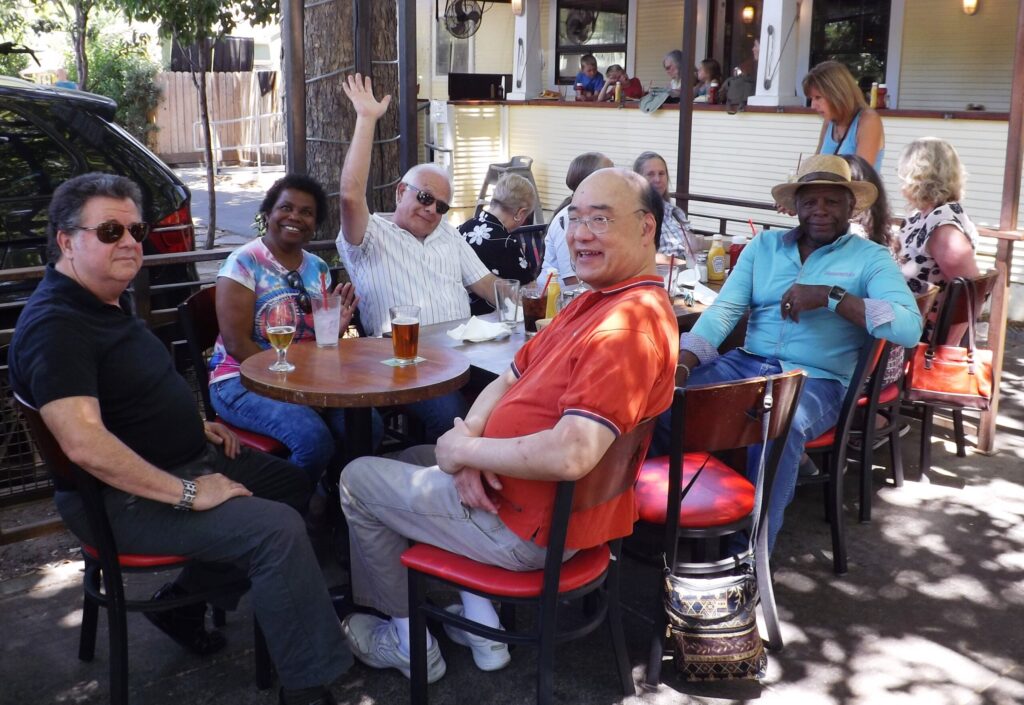The year is 1981, and two groups of men in their 70s and 80s are taken to an old monastery in New Hampshire.
The monastery, they discovered, was decorated as if it were 1959, 22 years in the past.
Everything from the furniture and carpet was from the 50s. Life magazine was scattered around the monastery as was the Saturday Evening Post. The Ed Sullivan Show played on the black-and-white television, and Perry Como crooned on a vintage radio in the background.
The men were asked to engage fully as if it were 1959, so they discussed issues such as the launch of the first U.S. satellite, Nikita Khrushchev, Fidel Castro, and watched the 1959 film Anatomy of a Murder.
This, then, would be their home and life for the next seven days, as they participated in an experiment by American psychologist Ellen Langer.
Before arriving at the monastery, all men were assessed on their strength, hearing, vision, flexibility and dexterity. The first group that arrived were asked to pretend they were young men living in the 1950s. The second group of men, which arrived a week later, were asked to simply reminisce about the past, while staying in the present.
By now you must be thinking, what is the purpose of this?

Dr. Ellen Langer, Harvard professor of psychology and the designer of the above experiment, which she later called the Counterclockwise Study, wanted to study how the body and brain work together in interpreting thoughts. Put simply, a study such as this could either confirm or discredit the old adage “you are as old as you think you are”.
The results of the above study were astounding, surprising even Dr. Langer and her researchers.
After just one week, all men were once again tested, with the results revealing that:
“Both groups were stronger and more flexible. Height, weight, gait, posture, hearing, vision—even their performance on intelligence tests had improved. Their joints were more flexible, their shoulders wider, their fingers not only more agile, but longer and less gnarled by arthritis. But the men who had acted as if they were actually back in 1959 showed significantly more improvement. Those who had impersonated younger men seemed to have bodies that actually were younger.” – Harvard Magazine, 2010
While this study may have been conducted in the early 80s, it is still significant because it was one of the first studies conducted in the West to explore the mind-body connection. Since then, numerous research studies has confirmed what Dr. Langer discovered.
What we learn is that what the mind believes, the body will deliver. While we cannot change our biological age, our mental age and capabilities could be that of a much younger person if we change our mindset.
Staying positive is imperative then – if we think we are young and act as if we are, then our body will be young. I guess we can think ourselves younger!
How do we do this?
While we can’t all re-decorate our homes and live twenty years in the past, there is one thing we can do to help stave off the effects of ageing.
Firstly, we must try staying positive by becoming aware of our thoughts and words. Instead of saying ‘I am too old to be doing salsa’, rephrase this to ‘I am young enough to be doing salsa’. Practising this technique over and over again will train our brains to actually believe it.
Don’t forget, that what the mind thinks, the body will deliver. So don’t lead it astray.
Listen to this podcast by Ellen Langer called ‘Think yourself younger, healthier, happier and more successful’.




